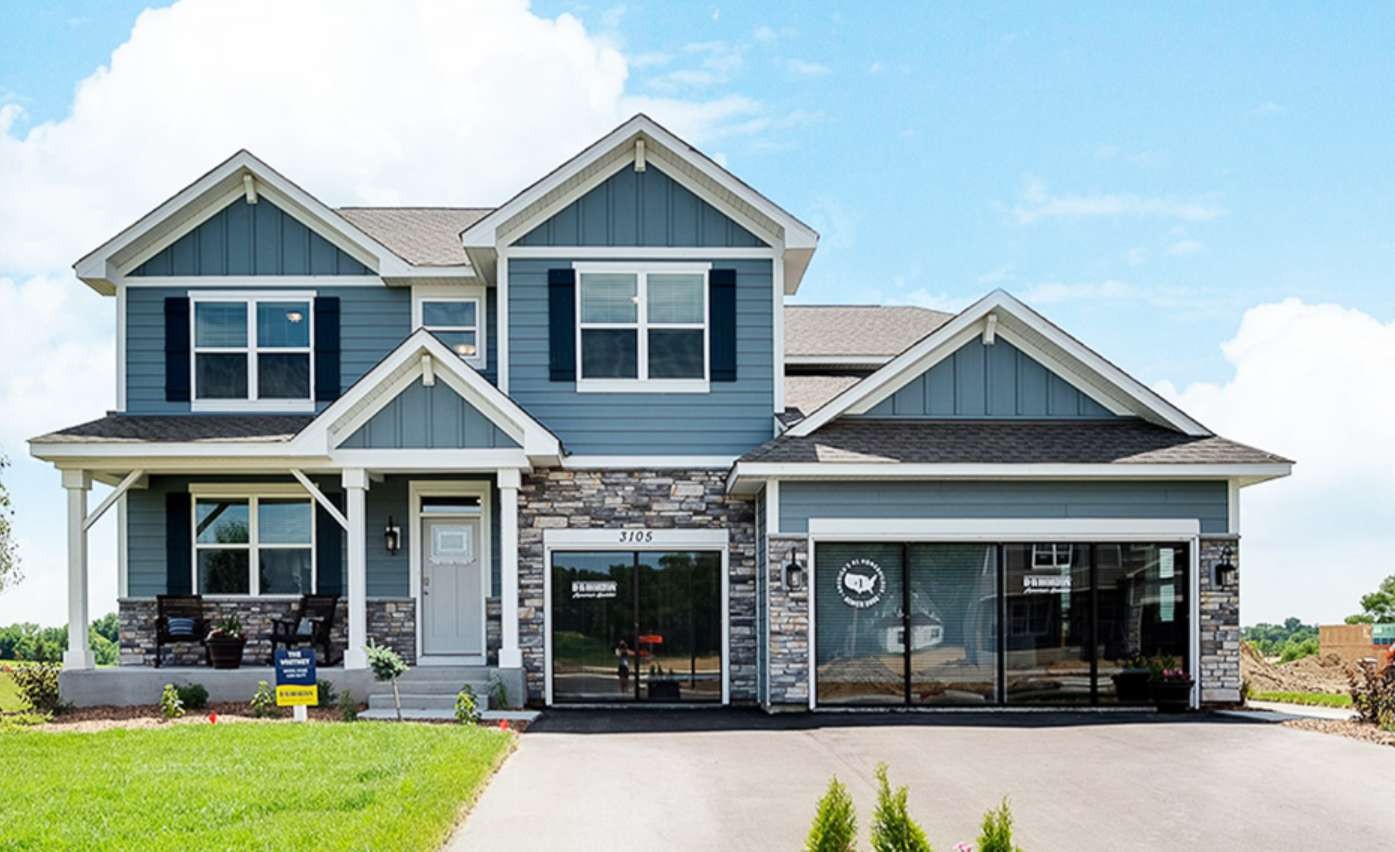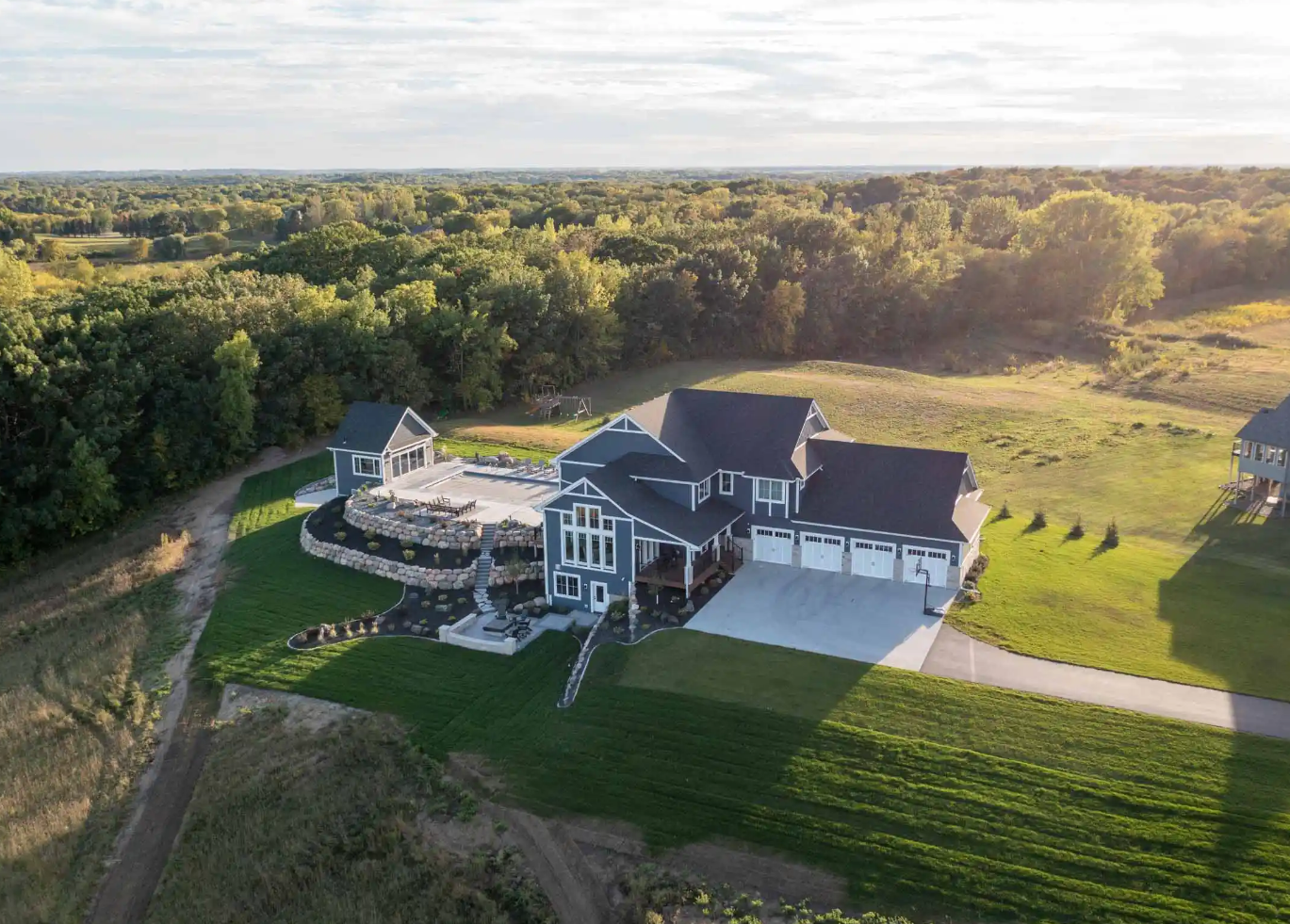Why Does Energy Efficiency Matter More in Minnesota?
Minnesota's climate presents unique challenges that make energy efficiency critical for both comfort and affordability. With winter temperatures regularly dropping below zero and summer heat indices exceeding 100°F, homes in Prior Lake and Lakeville must perform in conditions that push HVAC systems to their limits.
When Moderno builds custom homes, energy efficiency isn't an afterthought—it's designed in from the ground up. Our three generations of Minnesota building experience has taught us exactly what works in our challenging climate.
Real Savings Impact: Families moving from older, inefficient homes to custom energy-efficient homes typically see 40-60% reductions in heating and cooling costs. In Minnesota, that can mean savings of $1,500-$3,000 per year.
Sign #1: Your Utility Bills Are Consistently High Despite Conservation Efforts
Understanding Minnesota's Energy Cost Reality
If you're already keeping your thermostat at 68°F in winter and 76°F in summer, using LED bulbs, and being mindful of energy use but still facing high utility bills, the problem is likely your home's fundamental energy performance.
Common issues in older Minnesota homes include:
- Inadequate insulation: Many homes built before 2000 have insulation levels that were considered adequate then but fall short of current efficiency standards
- Air leakage: Small gaps around windows, doors, and penetrations add up to the equivalent of leaving a window open year-round
- Oversized or undersized HVAC systems: Improperly sized systems work harder and less efficiently
- Single-pane windows: These act like thermal holes in your home's envelope
What Energy-Efficient Custom Homes Include
When we build custom homes in Prior Lake and Lakeville, we incorporate advanced energy features as standard:
- Superior insulation packages: R-values that exceed code requirements by 20-30%
- Advanced air sealing: Professional testing to ensure minimal air infiltration
- High-performance windows: Triple-pane, low-E windows designed for Minnesota's climate
- Right-sized HVAC systems: Proper load calculations ensure optimal efficiency
Sign #2: Some Rooms Are Always Too Hot or Too Cold
The Problem with Uneven Temperatures
If your master bedroom is freezing while your living room is overheated, or if upstairs rooms are stuffy in summer despite your air conditioning running constantly, you're experiencing the effects of poor energy design.
Energy Design Solution: Custom homes allow us to design HVAC systems with proper zoning, ductwork sizing, and air distribution to ensure consistent comfort throughout your home.
How Custom Design Solves Temperature Issues
In custom home design, we address comfort issues before construction begins:
- Strategic window placement: Maximizing natural light while minimizing heat gain/loss
- Proper ductwork design: Correctly sized and positioned for optimal air distribution
- Zoned climate control: Different areas of your home can be controlled independently
- Thermal bridge elimination: Advanced framing techniques that reduce heat transfer
Sign #3: Your HVAC System Runs Constantly but You're Still Uncomfortable
When More Runtime Doesn't Equal More Comfort
If your furnace or air conditioner seems to run non-stop during extreme weather but your home never feels comfortable, you're likely dealing with fundamental efficiency problems that can't be solved with equipment upgrades alone.
This often indicates:
- Excessive air leakage causing conditioned air to escape
- Inadequate insulation allowing heat transfer through walls and ceilings
- Ductwork problems causing heated or cooled air to be lost before reaching living spaces
- Windows that act as thermal weak points
Integrated Energy Solutions
Our construction approach treats your home as a complete system where every component works together:
- Building envelope optimization: Creating a continuous thermal and air barrier
- Mechanical system integration: HVAC, ventilation, and moisture control working in harmony
- Smart home capabilities: Automated systems that optimize comfort and efficiency
Sign #4: You're Facing Major System Replacements
The Perfect Time for Energy Upgrades
When your furnace, air conditioner, or water heater needs replacement, it's often the perfect time to consider whether building custom makes more financial sense than upgrading systems in an inefficient home.
System Replacement Costs in Existing Homes:
- High-efficiency furnace: $4,000-$8,000
- Central air conditioning: $3,000-$6,000
- Tankless water heater: $3,000-$5,000
- Ductwork improvements: $3,000-$7,000
- Windows throughout: $15,000-$30,000
- Insulation upgrades: $5,000-$12,000Total: $33,000-$68,000 – and you still have an older, less efficient home.
Custom Home Energy Advantages
With custom construction, these efficiency features are built in from the beginning at a much better cost-per-benefit ratio:
- Integrated systems designed to work together optimally
- Latest technology and equipment as standard features
- Warranty protection on all components
- Future-proofing for evolving energy technologies
Sign #5: You're Interested in Renewable Energy but Your Home Can't Support It
Solar and Geothermal Integration
Many families are interested in solar panels, geothermal systems, or other renewable energy technologies, but older homes often can't support these upgrades effectively due to:
- Electrical systems that can't handle additional loads
- Roof orientations or conditions that aren't ideal for solar
- Landscaping or lot limitations for geothermal systems
- Energy usage so high that renewable systems can't make a meaningful impact
Renewable-Ready Custom Homes
When designing custom homes in Prior Lake, we can integrate renewable energy considerations from the beginning:
- Solar-optimized design: Roof angles and orientations that maximize solar potential
- Electrical infrastructure: Panels and wiring designed for renewable energy integration
- Geothermal compatibility: Lot evaluation and system pre-planning
- Battery storage readiness: Space and electrical rough-ins for future energy storage
Future-Proofing Strategy: Even if you're not ready for renewable energy today, custom homes can be designed with the infrastructure to add these systems easily in the future.
Sign #6: Indoor Air Quality Issues Affect Your Family's Health
The Connection Between Energy Efficiency and Air Quality
Older, leaky homes often have air quality problems because they allow uncontrolled air infiltration while lacking proper ventilation. This can lead to:
- Excess humidity causing mold and mildew problems
- Dust and allergens infiltrating from outside
- Stale air due to inadequate fresh air exchange
- Chemical off-gassing from building materials with nowhere to go
Healthy Home Design
Custom energy-efficient homes address air quality through intentional design:
- Controlled ventilation: Energy recovery ventilators (ERVs) that bring in fresh air while recovering energy
- Moisture control: Proper vapor barriers and humidity management
- Low-emission materials: Careful selection of paints, flooring, and cabinetry
- Advanced filtration: High-efficiency air filtration integrated into HVAC systems
Sign #7: You Want Smart Home Features but Your Current Home Can't Support Them
The Infrastructure Challenge
Modern smart home systems require robust electrical infrastructure, reliable internet connectivity, and integrated design that older homes often can't provide without expensive retrofitting.
Smart Energy Management
Custom homes can integrate smart systems that optimize both comfort and efficiency:
- Smart thermostats with zoning: Room-by-room temperature control
- Automated lighting: LED systems that adjust based on occupancy and time of day
- Energy monitoring: Real-time feedback on energy usage and costs
- Integration capability: Systems that work together rather than competing
Ready to Explore Energy-Efficient Custom Home Options?If several of these signs resonate with your current situation, it might be time to explore what a custom energy-efficient home could mean for your family.Schedule your energy efficiency consultation to learn about the possibilities.




